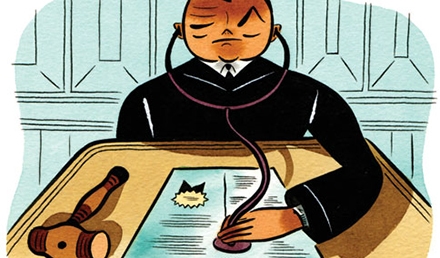Signs of aging and risk of heart disease Key point: Some outward signs of aging may correlate with increased risk of heart disease including MI. Citation: Christoffersen M, Frikke-Schmidt R, Schnohr P, et al. Visible age-related signs and risk of ischemic heart disease in the general population: A prospective cohort study. Circulation. 2014;4l128(9):990-998. Investigators in Denmark in this 35-year prospective trial attempted to see if outward signs of aging (frontoparietal baldness, crown top baldness, earlobe crease, …
Read More
Acute Pericarditis
Urgent message: This case underscores the importance of not “anchoring” to a previous provider’s diagnosis and always remembering that medical conditions are dynamic. JOHN J. KOEHLER, MD, and DANIEL MURAUSKI, DO Introduction Acute pericarditis is defined as inflammation of the pericardium that surrounds the heart and the base of the great vessels. The classical presentation consists of chest pain, a pericardial friction rub, and serial changes on electrocardiogram (EKG). Although data on the incidence of …
Read MoreClinical Challenge – May 2014
THE CASE This patient presented with an ankle injury. View the image taken (Figure 1) and consider what your diagnosis would be.
Read More
Evaluation of Headaches in Urgent Care Part 1: Emergent Headaches
Urgent message: Identifying potentially life-threatening or emergent causes of headaches can be challenging in urgent care. Emergent headaches are the focus of the first of a two-part series, aimed at aiding practitioners in appropriate evaluation and management. JACQUALINE DANCY, PA-C, MPAS Introduction The presentation of headaches in the urgent care setting often elicits some healthy angst. Differentiating between potentially life-threatening headaches and more benign varieties can be challenging, especially when the signs and symptoms are …
Read MoreRisk Mitigation in Urgent Care: Part 2
Lee A. Resnick, MD, FAAFP My previous column presented the building blocks of a risk mitigation framework for your practice. This column specifies high-risk areas of urgent care practice that create exposure for both owner and clinicians and suggests ways to mitigate that risk. Charting / Documentation: Your best defense when there is a bad outcome is documentation. The chart should clearly communicate your decision-making. The “standard of care” is not a guarantee against harm. …
Read MoreAbstracts in Urgent Care: April, 2014
Prompt Treatment of Pediatric UTI Prevents Renal Scarring Key point: To avoid renal scarring, don’t wait for urine culture in pediatric patients. Treat within 3 days. Citation: Coulthard MG, Lambert HJ, Vernon SJ, et al. Does prompt treatment of urinary tract infection in preschool children prevent renal scarring: Mixed retrospective and prospective audits. Arch Dis Child. 2013 Dec 18; [e-pub ahead of print]. Investigators in England looked at the relationship between time to treatment and …
Read MoreClinical Challenge – April 2014
THE CASE This patient presented with a painless mass in the leg. View the image taken (Figure 1) and consider what your diagnosis would be.
Read More
Sarcoidosis
Urgent message: The key to this case was in the details of the presenting symptoms in the patient history: Alarm symptoms including extreme fatigue and weight loss, which warranted further diagnostic work up. ABRAR KHAN, MD, MBA, REVATHY NAIR, MD, and MARIANN MELICHAREK, MD, FACEP Introduction Sarcoidosis is a multisystem granulomatous disorder of unknown etiology. Most patients with sarcoidosis present to urgent care providers with symptoms such as cough, dyspnea, chest pain, eye pain and/or …
Read More
Assessment and Management of Asthma Exacerbation in Urgent Care: Part 2
Urgent message: The second part in a two-part series offers expert guidance on short and long-term management of the disease in the urgent care setting through the use of pharmacotherapy, protocols for treatment, and a written asthma action plan at discharge. BRADLEY M. TURNER MD, MPH, MHA, FCAP, FASCP and JANET M. WILLIAMS, MD, FACEP Introduction Once the suspicion of an asthma exacerbation exists, short term management is focused on reducing the severity of the …
Read MoreRisk Mitigation in Urgent Care: Part I
Lee A. Resnick, MD, FAAFP Editor’s Note: This is the first of a two-part column that examines ways to reduce liability in the urgent care setting. Our discipline is evolving rapidly and best practices are beginning to be defined. Staying abreast of practice standards for urgent care and implementing a disciplined risk mitigation plan will help your practice avoid the disruptive burdens of a medical malpractice lawsuit. The urgent care approach to risk management should …
Read More